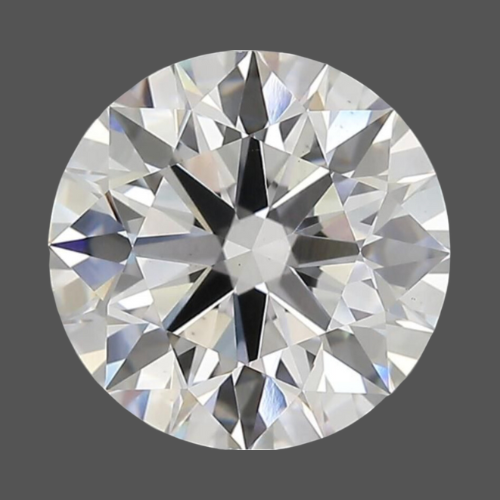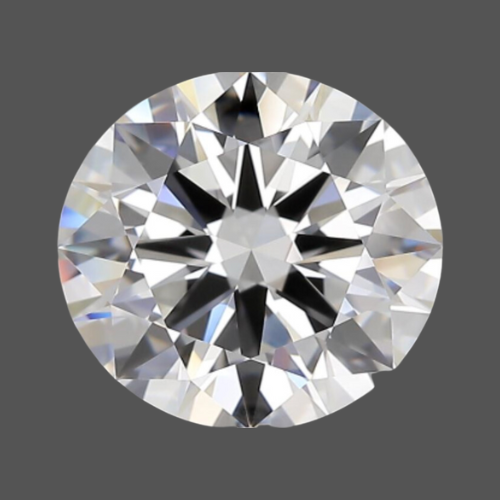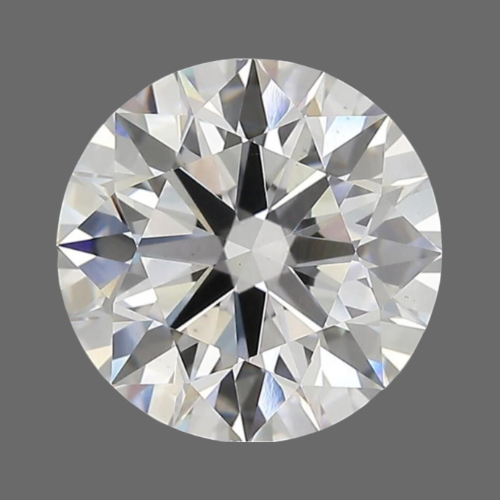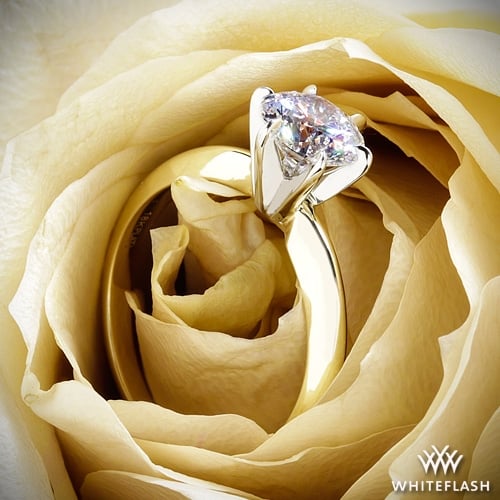When it comes to choosing a diamond, size is one factor, but it’s far from the only one. This PriceScope educational guide dives into the beautiful, complex world of 4-carat diamonds. We’ll explore everything from cost to quality, clarity to color, and even showcase the inspiration behind choosing your 4-carat diamond shape.
Understanding the Costs
The cost of a 4-carat diamond isn’t just based on its size. Factors like cut quality, clarity, color, and shape all play a significant role in the price. High-quality 4-carat natural diamonds can range from $30,000 to well over $100,000. And remember, as carat size increases, the cost per carat also escalates exponentially. This is due to the rarity of larger, high-quality diamonds.
Staying updated with the current market prices is crucial when investing in diamonds. PriceScope's latest diamond prices chart provides real-time data on 4-carat diamonds, helping you make a wise investment decision. Stay informed and get the best value for your money with PriceScope.
Lab-Grown Diamonds at PriceScope
Cut Quality for 4-Carat Diamonds
Cut quality can make or break the sparkle of your diamond. This is where a diamond’s brilliance, fire, and scintillation are determined. A well-cut diamond will reflect light internally from one facet to another and disperse it through the top of the stone.
Diamond cuts are graded from Excellent to Poor. An excellent cut grade maximizes light return, while a poor cut can make the diamond look dull and lifeless, even with high color and clarity. If you’re investing in a 4-carat diamond, it’s crucial to pay close attention to its cut quality.
4-Carat Diamond Sizes
While carat refers to the weight of a diamond, not its size, the two are related. A 4-carat round diamond typically measures around 10.2mm in diameter. However, depending on its cut, a diamond could appear larger or smaller than its actual carat weight. For example, an oval or marquise diamond may seem larger due to their elongated shapes.
4-Carat Diamond Clarity
Clarity refers to the absence of inclusions and blemishes. For a 4-carat diamond, you’d ideally want a clarity grade of VS2 or higher to ensure no visible inclusions to the naked eye. However, depending on the diamond’s shape and cut, you might be able to opt for a lower clarity grade without noticeable imperfections.
4-Carat Diamond Color
Color in diamonds refers to the presence of any color in a diamond, with the grading scale running from D (colorless) to Z (light yellow or brown). For a larger diamond like a 4 carat, a higher color grade (closer to D) might be preferable, as color tints can become more visible in larger stones.
4-Carat Diamond Engagement Ring Inspiration
There are countless ways to set a 4-carat diamond. For a truly regal look, consider a solitaire setting, which puts the focus squarely on the diamond. For added sparkle, a halo setting, where the central stone is encircled by smaller diamonds, can enhance the size and brilliance of your diamond.
4-Carat Diamond Engagement Ring
Choosing the Right Diamond Shape
Diamonds come in a variety of shapes, each with their unique characteristics. Round diamonds offer the most brilliance and are the most popular. If you prefer a more unique and elongated shape, consider an oval or pear-shaped diamond. These can also appear larger for their carat weight. Emerald and Asscher cuts offer a distinct, vintage appeal with their step cuts, but require higher clarity due to their open tables.
4-Carat Diamond Costs by Shape
The shape of a diamond refers to its physical form, and there are many different shapes to choose from. While round cut diamonds are the most popular, many other shapes, known as ‘fancy cuts’, are equally stunning and might better suit your personal style or the style of the wearer.
Round Cut: The round cut diamond is the most popular diamond shape, representing approximately 75% of all diamonds sold. It is also generally the most expensive due to its demand and the fact that more rough diamond is lost in the cutting process. Shop Round Cut Natural & Lab Diamonds at Whiteflash.
Princess Cut: This is the second most popular shape. The princess cut is traditionally a square shape with sharp, pointed corners. It is less expensive than the round cut because less rough diamond is wasted during the cutting process. Shop Princess Cut Diamonds at PriceScope
Oval Cut: The elongated shape of the oval cut can create the illusion of greater size. The slender shape can also make the finger of the wearer appear longer and slimmer. Shop Oval Cut Diamonds at PriceScope
Pear Cut: Also known as the teardrop shape, the pear cut is both unique and beautiful. It can be worn with the pointed end towards or away from the hand, and the length of the shape can make the fingers appear longer. Shop Pear Cut Diamonds at PriceScope
Cushion Cut: The cushion cut has gained popularity over the past decade. It has a square or rectangular shape with rounded corners, resembling a pillow or ‘cushion,’ hence the name. Shop Cushion Cut Diamonds at PriceScope
Emerald Cut: This shape is more about the clarity of the diamond, as its large, open table (the flat facet on the diamond’s surface) can highlight any inclusions or blemishes. The elongated shape and step cuts of its facets create a sophisticated, glamorous appearance. Shop Emerald Cut Diamonds at PriceScope
Asscher Cut: The Asscher cut is a stepped square cut, often called the “square emerald cut.” It has cropped corners and showcases the clarity of the diamond. Shop Asscher Cut Diamonds at PriceScope
Marquise Cut: This football-shaped cut can maximize carat weight, giving the appearance of a much larger diamond. The long, narrow shape can also make fingers look longer and more slender. Shop Marquise Cut Diamonds at PriceScope
Radiant Cut: The radiant cut combines the emerald cut’s stylish lines with the round cut’s brilliance. It’s a versatile cut that can be used in various ring styles. Shop Radiant Cut Diamonds at PriceScope
Heart Cut: A less common shape, the heart cut diamond is a symbol of love. The complexity of the shape requires a high degree of skill to ensure the proper symmetry and proportion, so it’s essential to find a reputable jeweler. Shop Heart Cut Diamonds at James Allen, and Blue Nile
The shape of the diamond can significantly influence the aesthetic of your ring. Some shapes can make the diamond appear larger, while others highlight the diamond’s clarity. Ultimately, the best shape to choose is the one that most appeals to you or your loved one. Check out the popular diamond shapes on the market in real-time. **Updated monthly at PriceScope
After exploring our comprehensive guide on 4-carat diamonds, why not use our Jewelry Search function to find the perfect setting? From classic solitaire to modern halo designs, find the ideal home for your chosen diamond. Discover the endless possibilities today.

Reasons Why It’s Important To Purchase A Certified 4-Carat Diamond
- Authenticity: Certification from a reputable lab guarantees that the diamond is real and not a synthetic or a look-alike stone such as cubic zirconia or moissanite.
- Quality Verification: A certified diamond comes with a report detailing its specifications, including the 4Cs—Carat, Cut, Color, and Clarity. This document verifies the diamond’s quality and provides transparency about its characteristics, enabling you to understand exactly what you’re buying.
- Value for Money: Certification helps to ensure that you’re paying a fair price for the diamond. By knowing the precise quality and characteristics of the diamond, you can compare prices across different sellers and make a more informed decision.
- Resale Value: If you ever decide to sell or trade-in your diamond in the future, the certification will play a crucial role. Certified diamonds typically have higher resale values because the next buyer or jeweler can be confident about the diamond’s quality.
- Insurance: In case of loss or damage, insurance companies usually require detailed information about the diamond, which is readily available in the certificate. This documentation helps establish the diamond’s value and replace it accurately.
Certification doesn’t just provide assurance—it is a critical tool for comparing diamonds, understanding their worth, and ensuring your investment is sound. It’s important to ensure the diamond is certified by a reputable institution such as the Gemological Institute of America (GIA), the American Gem Society (AGS), or the International Gemological Institute (IGI). These organizations are known for their rigorous standards and unbiased evaluations.
Final Thoughts
Investing in a 4-carat diamond is a significant decision. While size is certainly a factor, understanding the nuances of cut, clarity, color, and shape will ensure you make a well-informed purchase. The world of diamonds is complex, but armed with knowledge, you can navigate it to find the perfect 4-carat diamond that speaks to your style and stays within your budget. Remember, every diamond has a story to tell, and with this guide, you’re well on your way to finding one that tells yours.
Join the PriceScope online community and connect with other diamond enthusiasts. Share your journey of choosing a 4-carat diamond, gain insights from others' experiences, and ask for advice from seasoned buyers and industry experts. Become a part of our vibrant community today.






